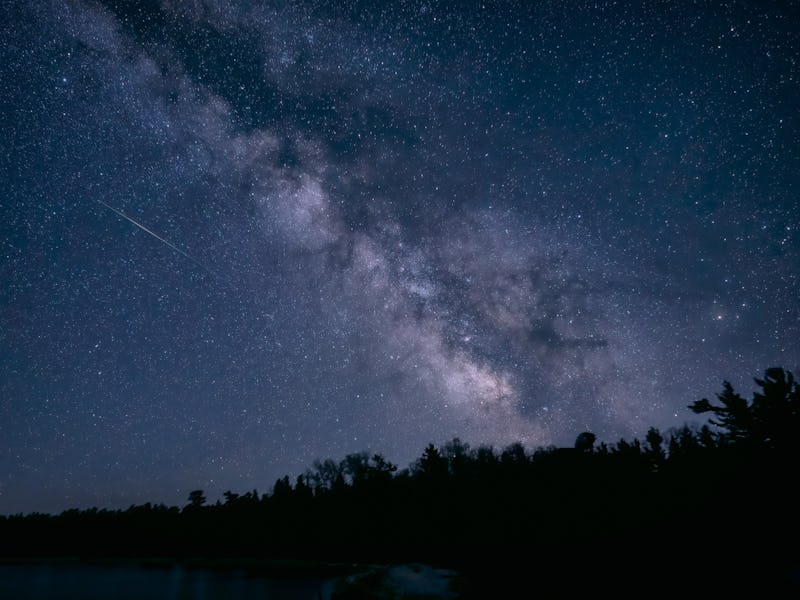You need to watch November's most stunning meteor shower in the sky
The Taurid meteor showers will reward patient sky gazers with the occasional bright fireball.

They may not be the most active of meteor showers, but the Taurids reward patient sky gazers willing to stay up or wake up and wait for its show.
Shooting across the skies from September into December, depending on which hemisphere you’re in, the Taurids are larger than the average meteor and sometimes result in glowing, brightly trailing fireballs rather than a brief streak of light. Here’s what you need to know if you’re going to catch sight of one.
How to see the Taurids meteor shower 2021
To best view the Taurids, you’re going to want to find as dark a location as possible. While you’ll be lucky enough to see a Taurid fireball from inside a city or amid suburban sprawl, the light pollution will obscure your view compared to darker sky sites.
The Moon can also wash out meteor trails, but the peak viewing times for the Taurids in 2021 mostly align with times the Moon is either set or in a New Moon phase.
In addition to dark, you’ll need patience: At their peak, the Taurus may result in around five meteors per hour, so plan on doing some general sky-gazing while you wait for a fireball. (Here’s a handy guide to what else you can see during a New Moon.)
What direction should I look to see the Taurids meteor shower?
The Taurid meteor showers come in two streams, one primarily visible from the southern hemisphere from late September into late November, and another visible from the northern hemisphere beginning in early October and lasting through early December.
Both the Northern and Southern Taurids will appear to radiate from the constellation Taurus, which is found to the northwest of the constellation Orion. The Taurids will mostly appear in the area around Taurus, so find the celestial bull to center your viewing and then scan the skies and constellations around it.
Taurus also contains the Pleiades, a prominent open cluster. Finding either Orion or the Pleiades should lead you right to Taurus, though if in doubt, there’s a phone app guide from AstroBackyard.
An International Astronomical Union chart showing the constellations Orion and Taurus.
What time is the Taurids meteor shower?
The best time to view the Taurids is around midnight your time, when the constellation Taurus is highest in the sky, but you may catch a fireball anytime throughout the night until before dawn given dark enough skies.
The Stellarium Web tool can help you orient to the correct location in the sky by time and allow you to catch Taurus on the early side.
When does the Taurids 2021 peak?
The Southern Taurids peak first on the night of November 4 into the morning of November 5. A New Moon will prevent any lunar light from disrupting your sky-gazing. The Northern Taurids peak the night of November 11 into the morning of November 12, and the Moon should set around midnight, providing clear viewing until just before dawn.
The Taurid peak brings about four to five bright meteors per hour, and as mentioned, the fireballs make for a most impressive sight.
What comet is associated with the Taurids meteor shower
The Southern Taurids originate with the comet 2P/Encke, which orbits the Sun every 3.3 years and passes as close as 31 million miles of the Sun and 16 million miles of Earth. The comet was first discovered in 1786 and is just under 3 miles in diameter.
A near-Earth asteroid, 2004 TG, may be a piece of Encke that broke off sometime in the past and follows a similar three-year orbit around the Sun. It is believed to be primarily responsible for the Northern Taurids.
The Pleiades, an open star cluster within Taurus.
When the Earth passes through a comet’s orbit, what happens
As comets or asteroids near the Sun, they heat up and are pulled on by Solar gravity. Some comet material evaporates or sloughs off, leaving a trail of material that can later intersect the Earth’s orbit, resulting in a meteor shower.
The debris trails left by the comet and asteroid are more dispersed than others, leading to the sparse nature of the viewing for sky gazers on Earth. But the debris that creates the Taurids is also larger, often the size of pebbles rather than grains of sand. Those larger objects entering the Earth’s atmosphere at 65,000 miles per hour are what make for such eye-catching fireballs when they happen.
How often does the Taurids meteor shower occur?
The Northern and Southern Taurid meteor showers occur annually in the late summer and autumn, and in 2022 will peak once again in early November. This means if you miss it this time around, it will be back next year to put on a fiery show.
Next meteor shower fall 2021
If you miss the Taurid meteor shower — or catch it and find yourself wanting more shooting stars — your next opportunity will be the Leonid meteor shower, which will peak late on November 16 through the morning of November 17. However, a bright moon will mean the best viewing will come right before dawn.
The Geminids shower will peak December 13 into December 14, but a waxing moon will mean the best viewing is just before dawn.
The last meteors to fall in 2021 will be the Ursids, which will peak just before dawn on December 22, after the Moon has set.
This article was originally published on